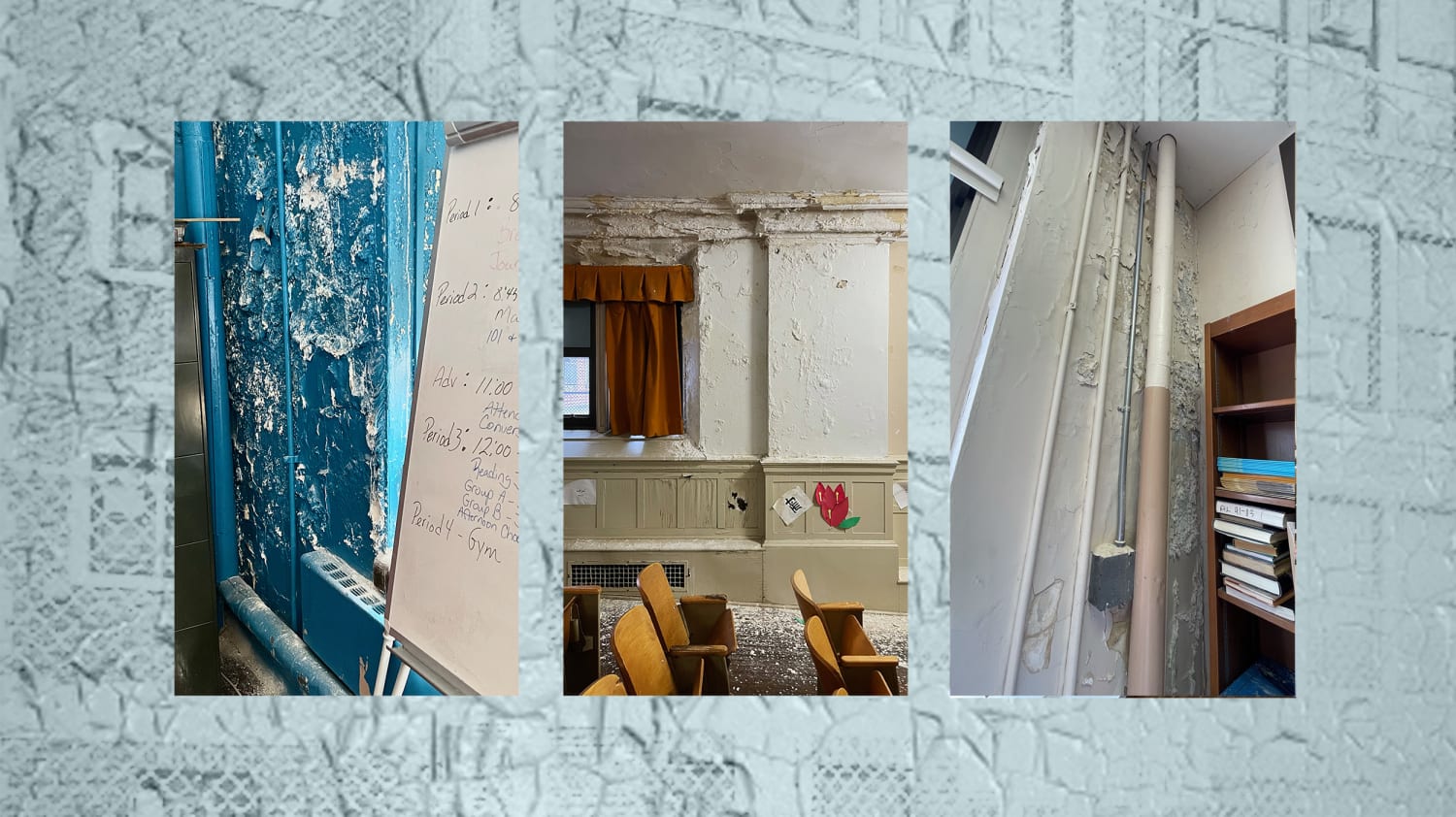
Clumpy lead paint and plaster curl off the walls of some inner-city Philadelphia schools. Staff members at a Florida school haul sandbags and clear drains manually during heavy storms. A 1930s-era boiler is still used to heat a Rhode Island school.
The snapshots are in a report last year from the Government Accountability Office, the first comprehensive picture of the dilapidated state of school facilities since Congress tried to call attention to the problem nearly 25 years ago after finding that a third of schools were in severely deficient condition.
The situation has only worsened since then in many inner-city and poor rural schools, environmental engineering experts and local officials say. And some worry that even an influx of cash from the federal government won’t be enough to remedy the issue.
“When I became superintendent, the most glaring example of disparity was the infrastructure,” said Nikolai Vitti, who was appointed superintendent of the Detroit Public Schools Community District in 2017. The poor conditions included water-stained, decaying ceiling tiles and repeated school closings because of “oven”-like conditions in warmer months and no heat in the winter, Vitti said.
“That’s a Third World country infrastructure issue, not something that we should be thinking about in America,” he said.
Nationwide, the backlog in school maintenance and repair projects is at least $500 billion, the nonprofit 21st Century School Fund estimates.
The Biden administration’s American Rescue Plan would inject $193 billion into the country’s crumbling schools. In guidance it issued last month, the Education Department said schools can use the money on “school facility repairs and improvements to reduce the risk of virus transmission and exposure to environmental health hazards, as well as inspection, testing, maintenance, repair, replacement, and upgrade projects to improve the indoor air quality in school facilities.”
But it cautions against new construction projects that could suck money from “essential needs and initiatives” and warns that major remodeling, renovation and new construction projects might be time-consuming and, therefore, unfeasible, because relief funds must be obligated by September 2024.
What’s more, much of the money is expected to go to remedy learning loss and to hire teachers and support staff members. Some districts are also under pressure to add security features, such as bulletproof windows and door barricades, after numerous school shootings.
In short, the funding isn’t nearly enough to overcome decades of neglect compounding health and safety risks, primarily in minority, underserved communities, local officials say.
In Detroit, where school buildings are 66 years old on average, the money will cover half of an infrastructure backlog estimated at $1.5 billion, Vitti said.
The disrepair in many inner-city schools is one of the starkest illustrations of inequality in America. Most school funding is tied to local tax bases, not formulas for equitable distribution.
“It really is a national tragedy when you start looking at these schools and understand what kids are subjected to,” said Jerry Roseman, an environmental engineer for the Philadelphia teachers union. In many buildings, conditions have deteriorated so badly that districts are plowing everything they have into maintenance to prevent schools from “failing catastrophically,” Roseman said.
Daniel Peou, principal of Horace Furness High School in Philadelphia, said he no longer feels safe in the school building. He said he and others have developed unexplained rashes after spending time inside.
“The truth is, no, I don’t feel comfortable being in there, and I spend most of my days in there,” Peou said. “But at the same time, I don’t want [students] to be home. I want them to be here. This is where they get their education.”
Maria Tobing, a student at the school, remembers one time when “the whole ceiling just went down,” almost hitting a teacher.
“We were all shocked, and I couldn’t concentrate during my test,” Tobing said.
Schools in Philadelphia need $3.5 billion in immediate upgrades, said Roseman, who produced a report last month describing “toxic” conditions in schools that he said have already had a “real impact on health.” Eighty percent of district buildings are more than 70 years old, and schools contain hundreds of thousands of square and linear feet of asbestos-containing material, the report found.
“Districts know they cannot fund what they need to fund. So you have to start misrepresenting the truth of that, because no one wants to compromise [faith in] public education. As these problems grow, you are less and less likely to be truthful and fully disclose reports,” he said.
The union said the superintendent has stopped sharing information about mold, lead paint and other hazardous materials that it used to share. Monica Lewis, a spokeswoman for the Philadelphia superintendent, said the office hadn’t received Roseman’s report, which is public.
Lewis said that an environmental advisory group is already in place and that issues from last year “have already been addressed.” She didn’t respond directly to Roseman’s claim that the superintendent has stopped sharing information.
While there have been significant associated health risks for decades, the Covid-19 pandemic has shed new light on the scale of the problem. For example, last summer the GAO estimated that 36,000 schools nationwide needed heating and air-conditioning repairs or updates for problems that, if left unaddressed, could lead to poor air quality and mold.
Other hazards the GAO has recently documented: 51 percent of the 100 largest school districts found lead-based paint in schools, and fewer than half of school districts have tested for lead in drinking water.
No federal law requires testing of drinking water for lead in schools that get their water from public systems. Furthermore, most states don’t conduct statewide assessments, leaving it to individual districts.
“There’s a weird regulatory gap when it comes to lead in the water,” said Anisa Heming, director of the Center for Green Schools, which advocates for greener and healthier school buildings. “A lot of schools are scared to test, because they don’t have the money to fix it.”
Source: | This article originally belongs to Nbcnews.com










